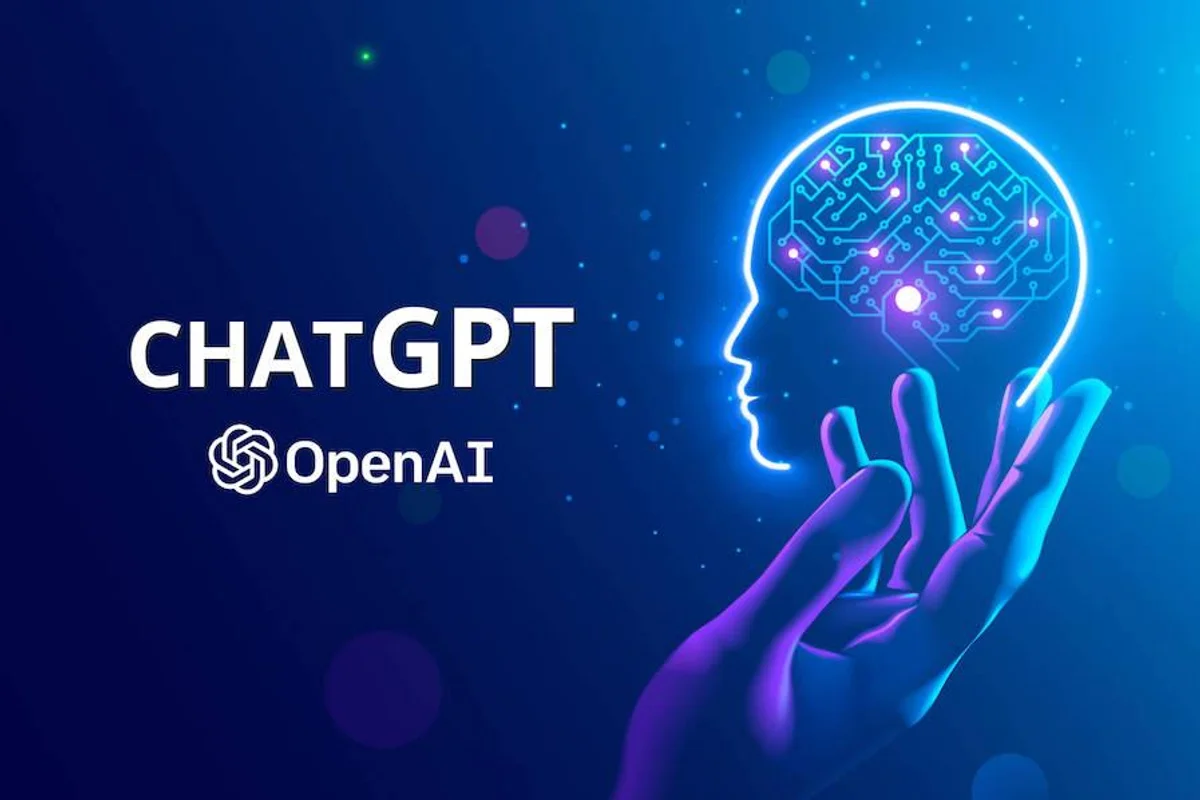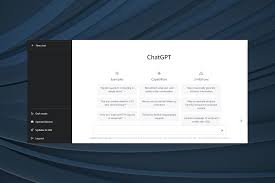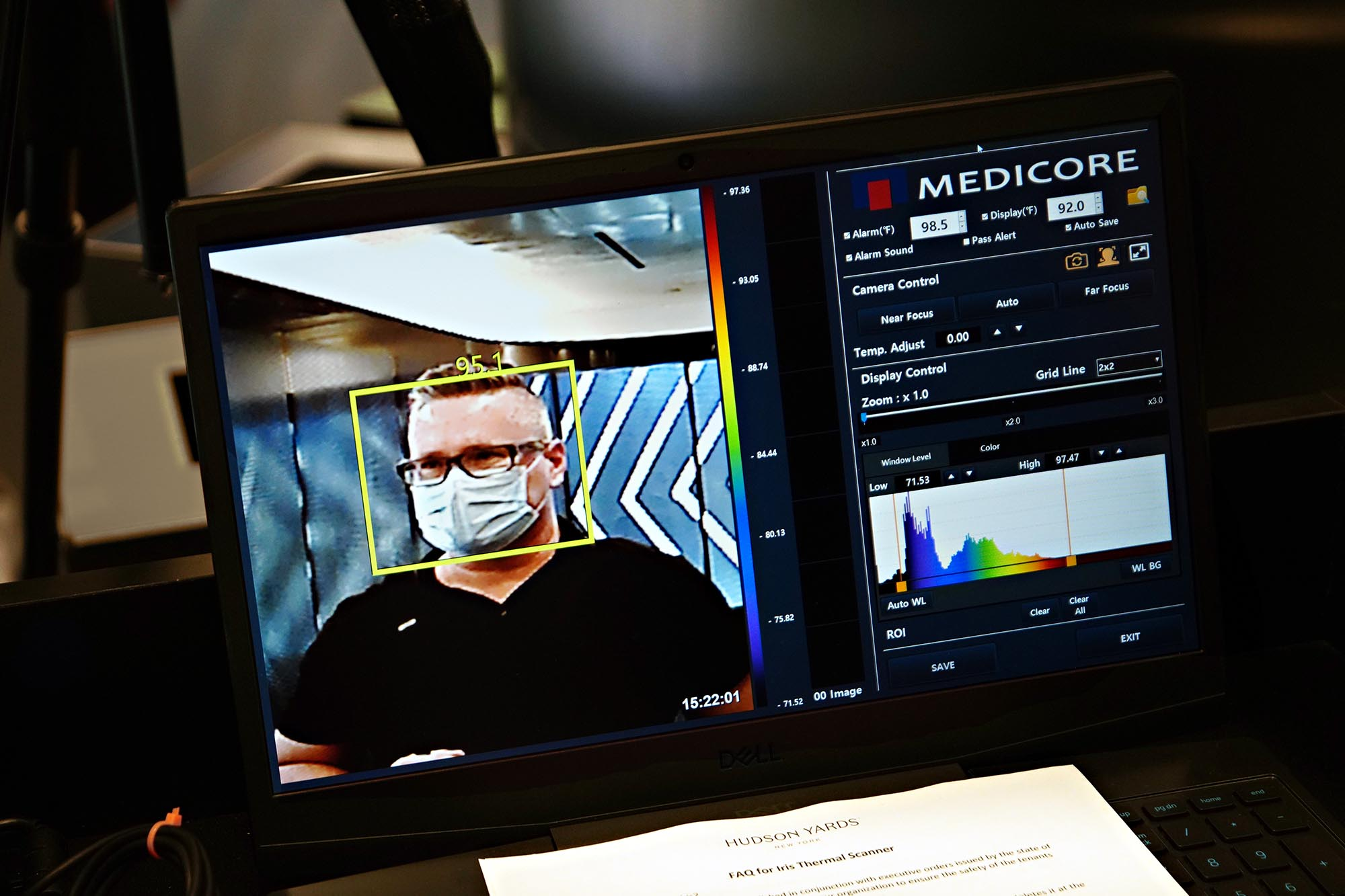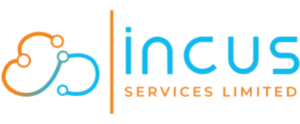ChatGPT is a groundbreaking technology that offers unique capabilities to develop sophisticated virtual agents, conversational bots and chatbot applications. It leverages artificial intelligence (AI) to understand natural language queries and formulate relevant responses, while leveraging the latest deep learning and natural language processing technologies.
This article will provide an overview of ChatGPT, discussing its components and architecture, best practices for implementation, how it compares to other AI-driven technologies, and potential use cases. Readers will gain insight into how this cutting-edge technology works and how it can be used to create automated conversational bots that mimic human interactions.
By the end of this article, readers should have a better understanding of ChatGPT and how to utilize it to produce impactful results.
Short Summary
ChatGPT is an AI chatbot developed by OpenAI using GPT-3.5 series to generate text in response to user prompts. It utilizes Natural Language Processing (NLP) and Machine Learning Algorithms to create artificially intelligent eco-systems, and it offers a free and premium version with different services. However, its use raises ethical concerns around bias, plagiarism, misinformation, privacy, and accountability.
What is ChatGPT?

ChatGPT is an artificial intelligence chatbot developed by OpenAI that uses natural language processing to generate text in response to user prompts.ChatGPT is based on a language model architecture called Generative Pre-trained Transformer (GPT), which is fine-tuned from a model in the GPT-3.5 series. It was trained on huge quantities of web content and is fine tuned in the language model by supervised learning and reinforcement learning from human feedback (RLHF).
ChatGPT has both a free and a premium version, with the latter providing users with priority access and faster response speeds. The free version is still available, but due to its popularity, the server can sometimes become overloaded and unable to process requests. The premium version has a limit of 100 messages every four hours.
It is a general-purpose chatbot that can answer a wide range of questions, from history and philosophy to world events and conspiracy theories. It can also write poetry, create opinion pieces, and suggest edits to computer programming code. ChatGPT has an understanding of code and can produce well-written content on complex topics in seconds. Thanks to its powerful algorithms, ChatGPT can remember information from conversations and give accurate responses.
Features
ChatGPT is a natural language processing tool driven by AI technology that allows you to have human-like conversations and much more with the chatbot. It can process code, write code, and help developers debug code as well. Additionally, it can be used for content creation, such as writing music or essays, and can interact with images and longer text.
OpenAI has implemented a moderation endpoint API to filter out offensive outputs from ChatGPT. This is a big deal as it reduces the risk of producing wrong answers and false positives. It has also been tested by Stanford University and demonstrated programming skills. Moreover, Mike Pearl of Mashable noted that it can produce "impressively detailed" and "human-like" text.
ChatGPT has a high Verbal IQ of 155, making it in the top 0.1% of test-takers. It learns from conversations with human contractors hired by OpenAI, as well as from scraped web content, and can generate plausible sounding texts. It can also suggest edits to computer programming code, pushback to questions related to Nazi Germany, and generate lyrics in the style of Taylor Swift or Billy Joel.
ChatGPT is a powerful tool that can be used for a variety of tasks, from content creation to debugging code, and its features make it a valuable asset for developers and content creators alike. It can be used to understand and carry out complex tasks quickly and accurately, making it a great asset for businesses and developers.
Limitations
ChatGPT has some limitations that should be taken into account when using the AI chatbot. As ChatGPT is limited to English language, it cannot understand context and background information, and often fails to understand sarcasm and humor. It can also struggle with subtle nuances of human communication, and can generate wrong answers and produce texts that sound plausible but are incorrect. Additionally, ChatGPT uses a limited knowledge base, and as such, cannot answer questions that are outside of its knowledge.
ChatGPT is also limited to what it can learn from web content and conversations with human contractors, and may not be able to understand more complex topics. It has also been noted that ChatGPT can produce conspiracy theories, and many researchers believe that the technology has many limitations.
These limitations are important to consider when using ChatGPT and other AI language generators. Despite its impressive capabilities, ChatGPT is still in its early stages, and its accuracy may vary depending on the input. Furthermore, while ChatGPT can be used to create content, it may not always be accurate and could lead to false positives.
How Does ChatGPT Work?

ChatGPT is an artificial intelligence chatbot developed by OpenAI that uses natural language processing to create human-like conversational dialogue.It is built on top of OpenAI's GPT-3.5 and GPT-4 families of large language models and has been fine tuned using both supervised and reinforcement learning techniques. The model was trained using text databases from the internet, 570GB of data obtained from books, webtexts, Wikipedia, articles and other pieces of writing, and a whopping 300 billion words fed into the system.
ChatGPT is constantly learning from past conversations, and its capabilities are ever-evolving. It can recognize and respond to a wide variety of human commands and can generate human-like answers to questions. It's free service provides users with priority access to the latest version of the chatbot, allowing them to take advantage of new features as they become available.
By understanding the development and training of ChatGPT, we can better understand its capabilities and limitations.
Natural Language Processing
Natural language processing (NLP) is a field of study that enables computers to understand, interpret, and generate human language by combining computer science and linguistics. This is done by analyzing words, grammar, syntax, and semantics to create a set of rules for the computer to follow when responding to user input.
NLP also allows ChatGPT to learn from past conversations and identify common patterns in language. By leveraging NLP, ChatGPT is able to learn and mimic human writing, allowing it to generate more natural responses. It is also able to recognize and respond to a wide variety of human commands.
Additionally, the chatbot can be fine-tuned using human feedback and trained to recognize specific words and phrases that are used frequently. This allows it to respond more accurately to user input and generate more natural sounding answers.
By understanding the capabilities of NLP, we can better understand how ChatGPT works and the limitations of its AI capabilities.
Machine Learning Algorithms
Machine Learning Algorithms are a set of statistical models and techniques that enable machines to learn from data and improve their performance on a specific task. Examples of Machine Learning Algorithms include Linear Regression, Logistic Regression, Decision Tree, SVM, Naive Bayes, and KNN. These algorithms are used to teach ChatGPT how to recognize words, understand grammar, and generate human-like responses in conversations.
ChatGPT is capable of recognizing patterns and shapes within an image. For example, the contours of cats, children and shirts. This is done using a reward model, created from rankings of responses by human trainers, which is used to fine-tune the model. Additionally, ChatGPT is able to understand how to write poetry and creative writing, making it a powerful tool for expressing creativity.
The chatbot also uses Proximal Policy Optimization (PPO), a cost-effective alternative to trust region policy optimization algorithms, to reduce false positives, false negatives, and nonsensical answers. This allows it to generate more plausible sounding responses and answer questions more accurately. Finally, ChatGPT is able to utilize GPT-4, the latest version of OpenAI's large language model, to input 8 times as many words as the original ChatGPT model.
By understanding the capabilities and limitations of Machine Learning Algorithms, we can create artificially intelligent eco-systems that can be used for a variety of tasks. This includes control robotics, playing with language, creating recipes, creating websites from handwritten sketches, summarizing blog posts using only words starting with 'g', understanding how to write poetry/creative writing, and more.
Generative Pre-trained Transformer (GPT)
Generative Pre-trained Transformer (GPT) is an AI model that uses transformers to find long-range patterns in data. It is trained on generic data in a two-stage process and fine-tuned on tailored data for specific tasks. This allows it to generate more accurate responses to user input and understand more complex concepts quickly.
GPT-4, the latest version of OpenAI's large language model, was released in March 2023 and is able to process 8 times as many words as the original ChatGPT model. It is used to generate text for applications such as chatbots and can also be used to control robotics, create websites from handwritten sketches, and more.
GPT-4 is also able to express creativity by playing with language and summarizing blog posts using only words starting with 'g'. Additionally, GPT-4 is able to reduce hallucinations, making fewer mistakes than the original ChatGPT model. It is able to understand how to write poetry and creative writing, making it a powerful tool for expressing creativity.
By leveraging GPT-4, ChatGPT is able to recognize shapes and patterns in images, understand complex concepts quickly, and generate more accurate and plausible sounding answers. GPT-4 is a powerful tool that can be used for a variety of applications, from language translation to generating text for applications such as chatbots.
What Can ChatGPT Do?

ChatGPT is an AI language model that can perform a variety of tasks related to natural language processing.It uses a large language model to generate human-like text and assist with tasks like composing emails, essays, and code. ChatGPT can also generate ideas, summarize research, and translate text. Its free version has access to the basic features, while priority access provides access to more technical details and better understanding.
ChatGPT is a powerful tool that can help with a variety of tasks, from writing poetry to answering questions about world events. However, it is important to note that the large language models used by ChatGPT have limited knowledge and can often provide nonsensical answers or false positives. To prevent this from happening, ChatGPT uses a reward model and reinforcement learning to teach itself how to generate more plausible sounding responses.
The latest version of ChatGPT, GPT-4, is able to write and debug computer programs, answer questions about the contents of a photo, and remember previous prompts in conversation. GPT-4 also enables users to give trained AI a wide range of worded prompts, such as questions or requests for writing on a chosen topic.
ChatGPT is a great tool to have, but there are a few concerns to consider. Since it is still new, it may not always provide accurate answers, and it can be difficult to control its output. Additionally, there are fewer people available to review the answers generated by ChatGPT, meaning there may be more false negatives than with other AI chatbots like Bing Chat. Furthermore, unlike ChatGPT, other AI language generators have their own APIs, making them easier to use.
ChatGPT is a powerful tool that can help with a variety of tasks, but it is important to understand the ethical implications of using such a tool. It is essential to use the software responsibly and make sure that it is not used for any malicious purposes. Additionally, it is important to make sure that the latest version of ChatGPT is used in order to make the most of its features and capabilities.
ChatGPT is a big deal, and as more users become aware of its capabilities, its importance will only grow. With the right understanding, its potential applications are vast, and its use can benefit many people in different ways.
How Much Does ChatGPT Cost and How Can You Use It?

ChatGPT is a powerful AI chatbot that offers a subscription plan called ChatGPT Plus for $20/month and an API for $0.002 per 1,000 tokens.This powerful language model utilizes neural networks, large language models, reinforcement learning, and machine learning algorithms to generate human-like conversations. It can be used to answer questions, write poetry, or even recreate news articles. The API uses a generative pre-trained transformer (GPT-4) to generate plausible sounding responses and can be fine-tuned with human feedback and training data.
ChatGPT. Plus offers a variety of benefits, such as priority access to new features, faster response speeds, and access to OpenAI's most advanced LLM, GPT-4. Additionally, the Plus version is available during peak times, ensuring no downtime for users. For those wanting to try out the technology without the added cost, there is a free version of ChatGPT that allows users to access the basic features of the chatbot. With the free version, users have access to the same features as those using the paid version, but at a much slower rate.
Aside from the obvious cost savings, the free version of ChatGPT also allows users to experience the technology without having to worry about the technical details. This makes it easier for those who are not familiar with artificial intelligence (AI) to understand how the chatbot works. For those who are more tech-savvy, the API can be used to create custom chatbots that are tailored to the user's specific needs.
For employers looking to assess candidates with ChatGPT-generated answers, OpenAI has created a research preview version with access to their most advanced LLM, GPT-4. This version allows employers to test candidates on their ability to generate responses that are more meaningful and relevant than those provided by the free version. Additionally, the latest version of ChatGPT includes new features such as reward models and world event search engines, allowing users to respond to questions more accurately and quickly.
Are There Any Other AI Language Generators?
AI language generators are becoming increasingly popular as they offer a way to generate text quickly and accurately.These language models are built using natural language processing and machine learning algorithms, and have been trained to generate text that is similar to existing text. For example, OpenAI released GPT-3 in 2020, a large language model which is capable of generating human-like text. GPT-3 and other large language models such as Ernie Bot and YaLM 2.0 are able to generate text without human feedback, although they do require a lot of training data and can be fine-tuned with the help of humans.
In an opinion piece for The New Yorker, Ted Chiang compared ChatGPT to other large language models, calling ChatGPT a “blurry jpeg” of all the text on the Web, retaining much of the information but generating nonsensical answers to factual questions. He also noted that large language models have many limitations, such as the lack of human feedback during the training process and the reliance on supervised learning and reward models which can lead to overfitting.
Apart from ChatGPT, there are other generative AI technologies that are gaining popularity, such as image-generators Dall-E 2 and Midjourney, and avatar-generator Lensa. OpenAI announced plans to release a dangerously strong AI, GPT-3.5, which is an improved version of GPT-3. The AI is expected to be released in 2022 and will be capable of generating human-like text, as well as images, videos, and audio.
It is important to consider the implications of using AI language generators and how they may affect the future of ChatGPT. As AI chatbots become more sophisticated, they will require human AI trainers to fine-tune them and provide feedback to ensure the output is accurate. As AI written text becomes increasingly indistinguishable from human-written text, it will be important to ensure that AI chatbots are not used to manipulate search engine algorithms or deceive users. Additionally, it will be important to consider the ethical implications of using AI language generators and the potential for them to create ai-written text that is indistinguishable from human-written text.
What Are the Concerns for the Future of ChatGPT?

The concerns for the future of ChatGPT include ethical issues in education and other fields, the risk of spreading misinformation, and the possibility of AI chatbots taking over human jobs.The technology currently has the risk of spreading misinformation, infringing on intellectual property, and potentially replacing human workers. With ChatGPT's natural language processing abilities, it is possible for it to respond to questions with answers that are not factually accurate. This could lead to people believing false information and making decisions based on this misinformation. Additionally, there is a risk of plagiarism as ChatGPT is able to generate text that can be difficult to distinguish from human-created text.
Furthermore, ChatGPT is powered by machine learning algorithms which require a lot of data to produce accurate results. This data is collected from users and stored in a central database, creating a potential privacy risk. Additionally, there is a risk of data security breaches and the misuse of the data. As AI technology continues to improve, there is a risk that ChatGPT could replace many jobs in the future.
It is important to consider the ethical implications of using ChatGPT and other AI language generators, as well as the potential risks and benefits of such technology.
Where Does ChatGPT Thrive and Fail?

ChatGPT is an AI language model that can be used in various industries, including media, advertising, technical writing, journalism, customer service, manufacturing, and more.It is a powerful tool for many of these industries, as it allows for rapid content generation and automation of customer service tasks. ChatGPT is able to understand natural language, which makes it easier to use for those not familiar with programming. The ChatGPT API can also be used to create custom bots with specific purposes.
Unlike ChatGPT, its competitors are more focused on specific tasks, such as customer service, marketing, or data analysis. Many of these services also require programming knowledge to set up and maintain. Additionally, the way in which ChatGPT responds to questions and requests is often not as accurate as its competitors. This means that sometimes ChatGPT may not be able to effectively handle complex conversations, leaving customers with unsatisfactory results.
ChatGPT is a powerful tool for many industries, but it is not without its limitations. While it can generate content and automate customer service tasks quickly, it is not always able to accurately respond to questions and requests. Additionally, the ChatGPT API, which allows users to create custom bots, requires programming knowledge to set up and maintain. Despite the challenges it faces, ChatGPT is a valuable tool for those looking to rapidly generate content or automate customer service tasks.
Where Ethics and Artificial Intelligence Meet

The use of ChatGPT raises ethical concerns around bias, plagiarism, misinformation, privacy, and accountability.Bias is a concern when it comes to artificial intelligence chatbots, as language models are trained on large datasets of text, which may contain internet biases and stereotypes. This can lead to ChatGPT generating racist and sexist outputs. Conservative commentators have accused ChatGPT of having a left-leaning bias on certain issues. These include voter fraud, Donald Trump, and the use of racial slurs.
Another ethical concern is plagiarism. If ChatGPT is used to generate content, it is important to ensure that the generated content is not plagiarized. The professional associations and practitioners exploring the possible uses and concerns of ChatGPT in healthcare have raised this concern, as have scientific journals like Nature and JAMA Network who require authors to disclose use of text-generating tools, and ban listing language models as co-authors.
Misinformation is a major concern with the use of ChatGPT, as the technology can be used to generate false news stories and spread false information. OpenAI has put warnings in place around certain prompts, and have acknowledged plans to allow ChatGPT to create "outputs that other people (ourself included) may strongly disagree with". In response to criticism, many public figures, including Elon Musk and Steve Wozniak, have called for an immediate pause of giant AI experiments like ChatGPT, citing "profound risks to society and humanity".
Finally, privacy is a major ethical concern when using ChatGPT. OpenAI has taken steps to ensure that the data used to train the model is not used for malicious purposes, including paying Kenyan workers less than $2 per hour to label toxic content. However, the Italian data protection authority has taken action against ChatGPT, banning it in Italy and opening an investigation, claiming that the use of ChatGPT conversations as training data could be a violation of Europe's General Data Protection Regulation.
Will ChatGPT Be Banned in Schools?

ChatGPT has been banned in some schools due to concerns over cheating and plagiarism. As the first version of ChatGPT, created by OpenAI, is an AI chatbot that uses natural language processing and machine learning algorithms to generate answers to questions, there are worries that it could be used to cheat on tests. This has led to some schools banning it from use inside and outside of the classroom.
Unlike ChatGPT, its competitors, such as Cleverbot and Replika, offer a more controlled environment for conversations and are less likely to be used for cheating. However, despite the limitations of ChatGPT, it is still used by many students and professors to engage in conversations. Associate Professor Colette G. Sullivan from the College of the Holy Cross notes that “ChatGPT responds to you in the same way that a human would, making it an excellent tool for teaching students how to communicate effectively with other people.”
The legal implications of ChatGPT in schools are an important consideration when discussing the future of artificial intelligence. Schools need to understand the potential risks that come with using this technology, and how they can be mitigated. As AI continues to evolve, it’s important to consider the ethical implications of using it in the classroom.
Artificially Intelligent Eco-Systems

Artificially intelligent eco-systems are groups of AI systems that are interconnected and work together to achieve a common goal.This type of AI technology is becoming increasingly popular in the tech industry as organizations are using it to develop powerful AI chatbots and other AI tools. For example, OpenAI has developed the Generative Pre-trained Transformer (GPT-4) model, which uses natural language processing and machine learning algorithms to generate human-like conversation. Microsoft has also made an undisclosed investment in OpenAI to help further develop its AI technology.
Dangerously strong AI systems can also be created when multiple AI systems are combined and interconnected. For example, human trainers can use these AI systems to develop powerful AI agents that can act autonomously in a variety of scenarios.
As the technology continues to evolve, it is important to consider the ethical implications of using artificially intelligent eco-systems. It is important to consider how these systems might impact the way people interact with each other and the environment.
Summary
The development of ChatGPT brings about a number of unique advantages, but also requires responsible and ethical use. ChatGPT stands to revolutionize many industries owing to its powerful AI language model which can help with tasks such as content creation and automated debugging. The potential risks and benefits of using this technology should be carefully weighed before adoption in order to maximize potential while avoiding unethical applications of its data.
This natural language processing tool has the potential to generate human-like answers driven by OpenAI's GPT-3.5 and 4 families, which are powered by machine learning algorithms. This opens up the possibilities to develop artificially intelligent ecosystems that can create powerful AI tools and agents. It is important to consider the legal implications of using these technologies within schools and educational institutions, as well as the ethical considerations of public figures and authorities regarding bias, misinformation and privacy.
Overall, developing an understanding of ChatGPT and related technologies gives insight into the innovations now possible with advancements in AI. With further development comes the opportunity for more efficient processes and exponential expansion of capabilities, but always with responsibility and awareness.
